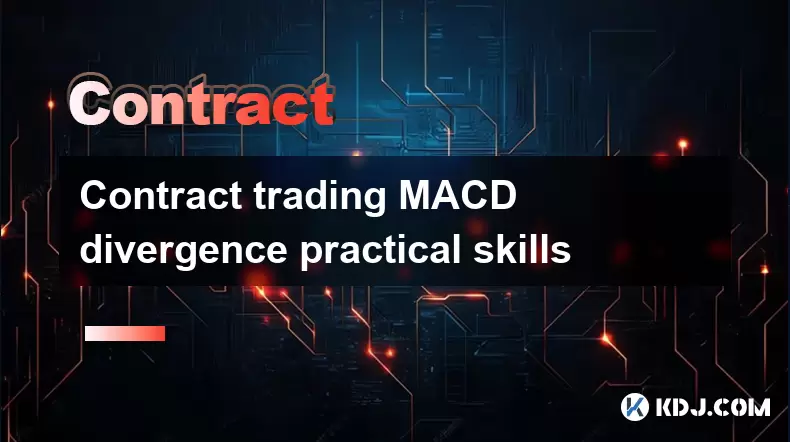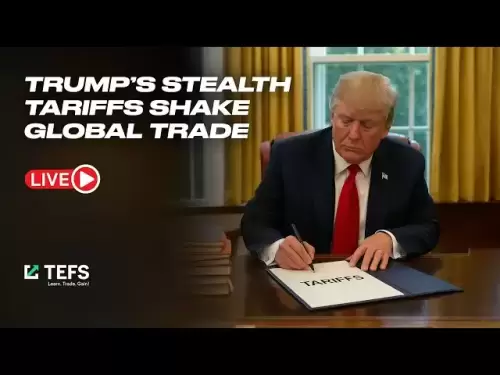-
 Bitcoin
Bitcoin $115200
-2.68% -
 Ethereum
Ethereum $3601
-5.16% -
 XRP
XRP $3.035
-2.96% -
 Tether USDt
Tether USDt $0.9997
-0.04% -
 BNB
BNB $764.5
-5.43% -
 Solana
Solana $168.1
-5.92% -
 USDC
USDC $0.9998
-0.02% -
 Dogecoin
Dogecoin $0.2090
-4.80% -
 TRON
TRON $0.3272
-0.49% -
 Cardano
Cardano $0.7306
-5.00% -
 Hyperliquid
Hyperliquid $39.16
-12.22% -
 Stellar
Stellar $0.3967
-4.96% -
 Sui
Sui $3.566
-5.95% -
 Chainlink
Chainlink $16.55
-6.57% -
 Bitcoin Cash
Bitcoin Cash $552.3
-3.90% -
 Hedera
Hedera $0.2516
-4.69% -
 Avalanche
Avalanche $21.99
-5.75% -
 Toncoin
Toncoin $3.621
-0.28% -
 Ethena USDe
Ethena USDe $1.000
-0.03% -
 UNUS SED LEO
UNUS SED LEO $8.951
0.02% -
 Litecoin
Litecoin $105.9
-3.59% -
 Shiba Inu
Shiba Inu $0.00001232
-5.00% -
 Polkadot
Polkadot $3.640
-5.55% -
 Uniswap
Uniswap $9.048
-7.03% -
 Monero
Monero $301.8
-1.51% -
 Dai
Dai $0.9999
-0.01% -
 Bitget Token
Bitget Token $4.334
-3.66% -
 Pepe
Pepe $0.00001064
-6.17% -
 Cronos
Cronos $0.1367
-5.78% -
 Aave
Aave $259.2
-4.59%
Contract trading MACD divergence practical skills
Master MACD divergence in crypto contract trading to enhance strategies and improve outcomes; understand regular and hidden divergence for better trading decisions.
Jun 10, 2025 at 02:14 pm

Contract trading in the cryptocurrency market can be a lucrative yet challenging endeavor. One of the key tools traders use to enhance their strategies is the Moving Average Convergence Divergence (MACD) indicator. Understanding how to identify and utilize MACD divergence can significantly improve your trading outcomes. In this article, we will delve into the practical skills needed to master MACD divergence in contract trading.
Understanding MACD and Divergence
The MACD indicator is a momentum oscillator that follows trends by measuring the difference between two moving averages. It comprises the MACD line, the signal line, and the histogram. Divergence occurs when the price movement of an asset and the MACD indicator move in opposite directions. This phenomenon can signal potential reversals in the market, making it a crucial aspect of technical analysis.
There are two types of MACD divergence: regular divergence and hidden divergence. Regular divergence can signal a potential trend reversal, while hidden divergence can indicate a continuation of the current trend. Understanding these nuances is essential for effective trading.
Identifying Regular Divergence
Regular divergence is a powerful signal that can indicate a trend reversal. There are two forms of regular divergence: bullish and bearish.
- Bullish regular divergence occurs when the price makes a lower low, but the MACD makes a higher low. This suggests that the downward momentum is weakening, and a bullish reversal might be imminent.
- Bearish regular divergence occurs when the price makes a higher high, but the MACD makes a lower high. This indicates that the upward momentum is fading, and a bearish reversal could be on the horizon.
To identify regular divergence, follow these steps:
- Analyze the price chart: Look for a clear trend, either upward or downward.
- Observe the MACD: Compare the MACD line with the price action. For bullish divergence, the price should make a lower low while the MACD makes a higher low. For bearish divergence, the price should make a higher high while the MACD makes a lower high.
- Confirm with other indicators: Use additional technical indicators like RSI or volume to confirm the divergence signal.
Identifying Hidden Divergence
Hidden divergence is less known but equally important. It can signal the continuation of the current trend.
- Bullish hidden divergence occurs when the price makes a higher low, but the MACD makes a lower low. This suggests that the bullish trend is likely to continue.
- Bearish hidden divergence occurs when the price makes a lower high, but the MACD makes a higher high. This indicates that the bearish trend is likely to persist.
To identify hidden divergence, follow these steps:
- Analyze the price chart: Look for an existing trend, either bullish or bearish.
- Observe the MACD: Compare the MACD line with the price action. For bullish hidden divergence, the price should make a higher low while the MACD makes a lower low. For bearish hidden divergence, the price should make a lower high while the MACD makes a higher high.
- Confirm with other indicators: Use additional technical indicators to validate the hidden divergence signal.
Practical Application in Contract Trading
Applying MACD divergence in contract trading requires a systematic approach. Here are some practical steps to integrate MACD divergence into your trading strategy:
- Set up your trading platform: Ensure your trading platform has the MACD indicator enabled. Most platforms allow you to customize the settings, so choose the parameters that suit your trading style.
- Monitor the market: Keep an eye on the price action and the MACD indicator. Look for divergence patterns that align with your trading strategy.
- Enter the trade: Once you identify a divergence signal, consider entering a trade. For bullish divergence, you might enter a long position, while for bearish divergence, you might enter a short position.
- Set stop-loss and take-profit levels: Always set stop-loss orders to manage risk. Determine your take-profit levels based on your analysis of the market and the strength of the divergence signal.
- Monitor and adjust: Continuously monitor the trade and be prepared to adjust your stop-loss and take-profit levels as the market evolves.
Case Study: Applying MACD Divergence in Bitcoin Trading
To illustrate the practical application of MACD divergence, let's consider a hypothetical case study involving Bitcoin (BTC).
- Scenario: Bitcoin is in a downtrend, and you're monitoring the price chart for potential reversal signals.
- Observation: You notice that Bitcoin makes a lower low at $25,000, but the MACD makes a higher low. This indicates a bullish regular divergence.
- Action: You decide to enter a long position at $25,500, anticipating a bullish reversal.
- Risk management: You set a stop-loss at $24,500 to limit potential losses and a take-profit at $27,000, based on your analysis of resistance levels.
- Outcome: Bitcoin reverses and reaches your take-profit level at $27,000, resulting in a profitable trade.
This case study demonstrates how MACD divergence can be used to identify potential entry points and manage trades effectively.
Common Pitfalls and How to Avoid Them
While MACD divergence can be a powerful tool, there are common pitfalls that traders should be aware of:
- False signals: Not all divergence signals lead to significant price movements. It's essential to confirm divergence signals with other indicators and market conditions.
- Over-reliance on divergence: Divergence should be used as part of a comprehensive trading strategy, not as the sole basis for trading decisions.
- Ignoring market context: Always consider the broader market context when interpreting divergence signals. A strong trend or significant news events can override divergence signals.
To avoid these pitfalls, follow these best practices:
- Use multiple indicators: Combine MACD divergence with other technical indicators to increase the reliability of your signals.
- Stay informed: Keep up-to-date with market news and events that could impact price movements.
- Backtest your strategy: Before applying MACD divergence in live trading, backtest your strategy using historical data to understand its effectiveness.
FAQs
Q: How can I improve the accuracy of MACD divergence signals?
A: To improve the accuracy of MACD divergence signals, consider the following strategies:
- Use multiple timeframes: Analyze the same asset on different timeframes to confirm divergence signals. A signal that appears on multiple timeframes is generally more reliable.
- Incorporate volume analysis: Volume can provide additional confirmation of divergence signals. A divergence signal accompanied by increasing volume can indicate stronger potential for a price move.
- Combine with other indicators: Use indicators like RSI, Stochastic Oscillator, or Bollinger Bands to confirm MACD divergence signals. A confluence of signals from multiple indicators can increase the probability of a successful trade.
Q: What are the best settings for the MACD indicator in contract trading?
A: The best settings for the MACD indicator can vary based on your trading style and the specific asset you're trading. However, a common setting used by many traders is the 12, 26, 9 configuration, where the MACD line is the difference between a 12-period EMA and a 26-period EMA, and the signal line is a 9-period EMA of the MACD line. Experiment with different settings to find what works best for your trading strategy.
Q: Can MACD divergence be used in conjunction with other trading strategies?
A: Yes, MACD divergence can be effectively combined with other trading strategies to enhance your overall approach. For instance, you can use MACD divergence to identify potential entry points and then apply trend-following strategies to manage your trades. Additionally, combining divergence signals with support and resistance levels can help you set more precise stop-loss and take-profit orders.
Q: How do I handle conflicting signals from MACD divergence and other indicators?
A: When faced with conflicting signals, it's important to consider the overall market context and the reliability of each indicator. If the MACD divergence signal is strong and supported by other technical indicators, it might be worth prioritizing. However, if other indicators like RSI or volume contradict the divergence signal, it may be prudent to wait for further confirmation or adjust your trading strategy accordingly. Always prioritize risk management and consider the broader market environment when making trading decisions.
Disclaimer:info@kdj.com
The information provided is not trading advice. kdj.com does not assume any responsibility for any investments made based on the information provided in this article. Cryptocurrencies are highly volatile and it is highly recommended that you invest with caution after thorough research!
If you believe that the content used on this website infringes your copyright, please contact us immediately (info@kdj.com) and we will delete it promptly.
- FTX Token's Wild Ride: FTT Drop Amidst Creditor Repayment Buzz
- 2025-08-02 01:30:12
- Navigating the Crypto Market: Bitcoin, Trader Experience, and Avoiding the Noise
- 2025-08-02 00:50:12
- Deep Agents, AI Task Management, and Evolution AI: A New Era?
- 2025-08-02 00:50:12
- SPX6900, BlockDAG, and Miner Sales: A New York Minute on Crypto Trends
- 2025-08-01 23:30:15
- BlackRock, XRP ETF, and Ripple: Is the Perfect Storm Brewing?
- 2025-08-01 22:50:11
- Solana ETF Momentum Builds: Will SOL Join the Institutional Party?
- 2025-08-02 00:10:15
Related knowledge

Why is my Bitstamp futures position being liquidated?
Jul 23,2025 at 11:08am
Understanding Futures Liquidation on BitstampFutures trading on Bitstamp involves borrowing funds to open leveraged positions, which amplifies both po...

How to report Bitstamp futures for taxes?
Jul 30,2025 at 08:35am
Understanding Bitstamp Futures and Taxable EventsWhen trading Bitstamp futures, it’s essential to recognize that these financial instruments are treat...

Does Bitstamp offer inverse contracts?
Jul 23,2025 at 01:28pm
Understanding Inverse Contracts in Cryptocurrency TradingIn the realm of cryptocurrency derivatives, inverse contracts are a specific type of futures ...

What is the difference between futures and perpetuals on Bitstamp?
Jul 27,2025 at 05:08am
Understanding Futures Contracts on BitstampFutures contracts on Bitstamp are financial derivatives that allow traders to speculate on the future price...

How to find your Bitstamp futures trade history?
Jul 23,2025 at 08:07am
Understanding Bitstamp and Futures Trading AvailabilityAs of the current state of Bitstamp’s service offerings, it is critical to clarify that Bitstam...

Can I use a trailing stop on Bitstamp futures?
Jul 23,2025 at 01:42pm
Understanding Trailing Stops in Cryptocurrency TradingA trailing stop is a dynamic type of stop-loss order that adjusts automatically as the price of ...

Why is my Bitstamp futures position being liquidated?
Jul 23,2025 at 11:08am
Understanding Futures Liquidation on BitstampFutures trading on Bitstamp involves borrowing funds to open leveraged positions, which amplifies both po...

How to report Bitstamp futures for taxes?
Jul 30,2025 at 08:35am
Understanding Bitstamp Futures and Taxable EventsWhen trading Bitstamp futures, it’s essential to recognize that these financial instruments are treat...

Does Bitstamp offer inverse contracts?
Jul 23,2025 at 01:28pm
Understanding Inverse Contracts in Cryptocurrency TradingIn the realm of cryptocurrency derivatives, inverse contracts are a specific type of futures ...

What is the difference between futures and perpetuals on Bitstamp?
Jul 27,2025 at 05:08am
Understanding Futures Contracts on BitstampFutures contracts on Bitstamp are financial derivatives that allow traders to speculate on the future price...

How to find your Bitstamp futures trade history?
Jul 23,2025 at 08:07am
Understanding Bitstamp and Futures Trading AvailabilityAs of the current state of Bitstamp’s service offerings, it is critical to clarify that Bitstam...

Can I use a trailing stop on Bitstamp futures?
Jul 23,2025 at 01:42pm
Understanding Trailing Stops in Cryptocurrency TradingA trailing stop is a dynamic type of stop-loss order that adjusts automatically as the price of ...
See all articles

























































































